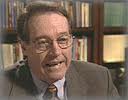Kane: Does Paying Absentee Ballot Postage Increase Turnout?
BY JIM KANE
In recent months, communities across the country have begun to entertain the costly measure of including postage-paid return envelopes with voters’ absentee ballots.
This past month, the Miami-Dade County Commission passed a resolution authorizing the inclusion of postage-paid envelopes with countywide absentee ballots at a cost of $170,000, partly in response to election fraud among so called ballot brokers.
In Hillsborough County, for example, the County has authorized $150,000 for postage-paid return in the hope they will increase turnout. The conventional wisdom, of course, is that reducing the cost of voting will increase participation.
This presumption has led states to institute a number of election reforms such as permanent or no excuse absentee voting, early in-person voting and, of course, the Grand Daddy of all voting reforms –the Motor Voter Law.
Yet voting-age population turnout and empirical analysis do not support (see Studies: No Increased Turnout From Early Voting) this assumption that making voting easier and convenient increases participation and, some cases, could actually decrease it.
Research into whether postage-paid absentee ballots increase participation is sparse.
Although there are many communities in the U.S. that use both regular and/or absentee-paid envelopes for ballots, it is not possible to determine the effects from these efforts since everyone receives one. In other words, there is no “control” variable that allows for a comparison with a “treatment” variable (in this case, voters who didn’t receive the postage-paid envelopes and those who did).
Unexpected Results: No Increase In Voting
But several political scientists from Stanford, Colombia, Yale, Loyola Marymount Universities, and Menlo College used an experimental design to avoid this inherent problem.
In an article published in the Election Law Journal (“The Effect of Prepaid Postage on Turnout: A Cautionary Tale for Election Administrators,” Volume 11, Number 3, September, 2012), the researchers report the results of their experiment conducted in San Mateo County, California during the November 2, 2010 general election.
Using a treatment group of 10,000 permanent absentee voters selected at random from a list of 148,840 permanent absentee voters, they uncovered a result totally unexpected.
Briefly, the researchers sent the treatment group the same ballot as used by all other absentee voters but with a postage-paid return envelope and instructions on its use. Everyone else just received the ballot and an envelope without any postage.
When the election was over, they compared the turnout between those who received the postage-paid envelope (the treatment group) with voters who did not (the control group). The treatment group had a turnout of 75.0 percent compared to the control groups 74.8 percent, a non-statistical difference.
In other words, paying the postage did not increase voter participation.
More surprisingly, they found that the postage-paid envelopes increased the probability of voting in person and decreased the probability of voting by mail! As it turns out, this result was most evident among voters with a longer history of absentee voting. The authors interpreted this anomaly to confusion on why the postage was included and caused them to vote in person to insure that their vote was actually counted.
For communities and states considering using taxpayer money to provide postage for absentee voters, these results should be sobering and enlightening. This study makes clear that including postage-paid envelopes does not increase turnout. And the idea that it prevents ballot fraud is dubious at best.
In Miami-Dade, for example, the inclusion of postage-paid envelopes for absentee voters is intended to prevent fraud by allowing voters to send in their ballot without the assistance of “boleteras” to deliver them, but at the cost of $170,000. A noble effort if only it would work.
The fraudsters will adapt to the new system, and likely just mail in the ballots they helped to fill out to begin with. Why not? It’s paid for.


October 17th, 2012 at 10:47 am
Is there a study on how many ballots were never received because of incorrect postage was placed on the envelope?
October 17th, 2012 at 11:56 am
My husband has frequently worked out of the area around election time. He always requests an absentee ballot that would be appropaite for Broward County.In a period of 10 years, 1 ballot arrived…this despite repeated phone calls, emails, etc seeking the missing ballots for every election. Oh, and the one that did? It arrived in December.